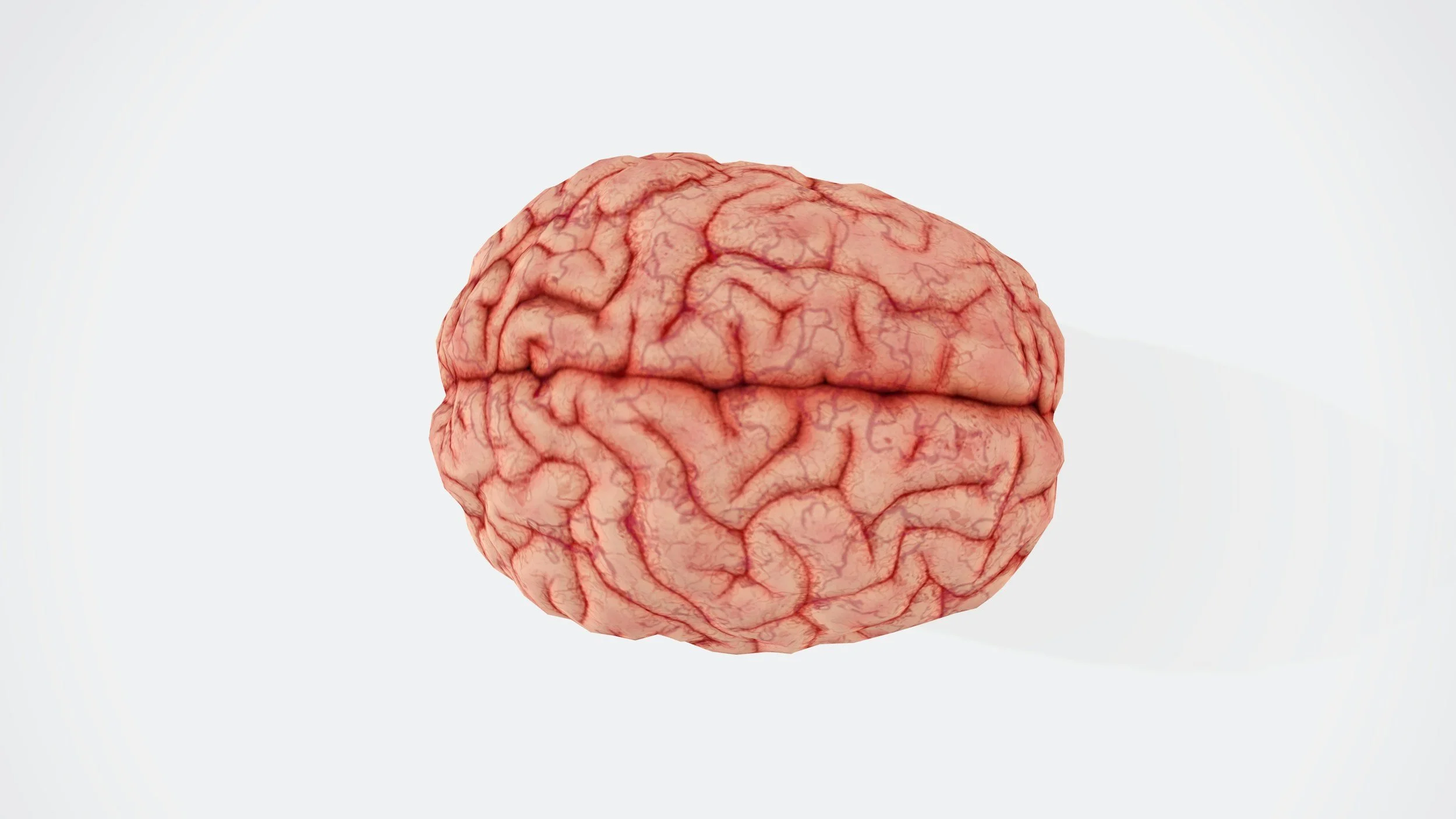GLP-1s: Can they cause eating disorders?
It’s nearly impossible to escape the onslaught of media heralding new drugs like Ozempic and Wegovy as the latest miracle weight-loss solutions. As someone who writes about and is in recovery from multiple eating disorders, I feel a strong sense of duty to learn everything I can about these drugs as I wistfully watch society topple backward toward an obsession with all things thin. After all, aspirational thinness is what drove my eating disorder to develop in the first place.
Rather than bore you with the science and initialisms galore, I’m going to do my best to distill the complicated workings of these drugs into language you can digest (pun intended) while also exploring how these drugs might be dangerous for someone in eating disorder recovery. So here we go.
NOTE: I am not a doctor or medical professional. Although I have a bachelor’s degree in nursing, I have not worked as a nurse for a long time. I gathered the information below from my own personal research.
What are GLP-1s?
Ozempic and Wegovy are brand names for “semaglutides,” also known as glucagon-like peptide-1 (GLP-1) receptor agonists. OK, I promise that’s the only science-y language I’ll use here.
How do they work?
GLP-1s stimulate the body (the pancreas, specifically) to secrete more insulin, which helps people who cannot make their own insulin (i.e., people with diabetes) to break down food and regulate glucose levels in the body.
Researchers eventually learned that GLP-1s also affect the hypothalamus, an area in the brain that regulates hunger, among other functions like hormone control and mood. They slow what’s called “gastric emptying,” or the rate at which food leaves the stomach and enters the small intestine. This delayed movement of food in the body causes someone who has eaten to feel fuller faster.
Who should use GLP-1s?
GLP-1s were approved by the U.S. Food and Drug Administration (FDA) in 2017 to help adults with type 2 diabetes. With the hunger component now in play, the FDA has since approved GLP-1s for people who have a body mass index (BMI) above 30 or a BMI above 27 with a “weight-related medical condition” like high blood pressure, type 2 diabetes, or high cholesterol.” Source
What are the side effects of GLP-1s?
The side effects of feeling fuller faster are mostly gastrointestinal (i.e., they happen in the gut). But the cultural side effects of weight loss may be even more uncomfortable. Let’s explore.
Physical side effects of GLP-1s
Anecdotally, people who have taken GLP-1s have reported discomfort and distress in their digestive system. This can look like:
nausea
constipation
bloating
gas
diarrhea
heartburn
indigestion
In one personal story I read, a woman on GLP-1s reported feeling the need to vomit after meals, a behavior consistent with symptoms of bulimia nervosa.
Over time, your body might not be able to distinguish between ridding itself of food because of discomfort or a desire to change its appearance. This is when things can become problematic.
Social side effects of GLP-1s
Beyond the physical discomfort brought on by GLP-1s, patients who lose weight might find themselves fending off a barrage of compliments. Thanks to decades of cultural conditioning, we’ve been taught to believe that thin is good, no matter what measures a person has taken to achieve it.
From the same article mentioned above: “Complimenting someone on their weight loss might seem like a kind act, but we need to ask ourselves the message that it sends, and whether commenting on anyone's figure is ‘kind’ or just plain dangerous.”
Personal story
After studying abroad in Paris, France for a summer, where I had unintentionally dropped a significant amount of weight, I was inundated with comments upon returning to college that fall. While I now know these comments were not meant to be compliments, rather alarms that I had gotten “too thin”—at least, according to the comment givers—I was elated at the time. After all, who wouldn’t want to be told they look thin?
Six months later, my eating disorder reached its zenith.
What happens if you stop taking GLP-1s?
In the previously mentioned article written by someone who took GLP-1s for a while, the author noted that her appetite returned to its normal levels once she stopped taking the drug. While her diminished appetite was left behind, her post-eating behaviors were not.
She found herself continuing to purge after meals out of habit, which she reported to be highly concerning. If the drug—like most diets—only works temporarily and the user snaps back to their old ways once the regimen stops, what’s the point of using the drug/going on the diet in the first place?
How are GLP-1s and eating disorders connected?
Even if it’s clear by now, it bears reiterating: the behaviors and attitudes around quick-fix weight-loss methods are fertile ground for developing a distorted body image and a disordered relationship with food. This is why these drugs are “contraindicated” (not recommended) for people who have a history of or a propensity to develop disordered eating. Let’s dive deeper into why this is.
‘Side effects’ may trigger disordered behaviors
The gastrointestinal side effects mentioned above might trick the brain into thinking it’s OK to indulge in these behaviors. The propensity for patients on GLP-1s to purge after eating might mentally reinforce these behaviors as “normal” since they’re an expected side effect of the medication. Whether the individual stops taking the drug or not, they may have convinced themselves that the behaviors are acceptable methods of weight loss.
According to Jennifer Rollin, LCSW-C, therapist and founder of The Eating Disorder Center, it’s not uncommon for patients to use weight-loss drugs to trigger or exacerbate disordered eating patterns. When coupled with genetics and psychosocial stressors, an individual’s risk of developing an eating disorder increases even more.
A return to the belief that ‘thin is in’
We as a society have done so much work in the body positivity and body neutrality movements. It pains me and so many others in this space to watch as society walks back many of these beliefs now that there is a quick fix available to the masses.
From an article about choosing to abstain from these weight-loss drugs, the author writes:
“Now that weight-loss drugs have become so much more popularized, having a heavyset body looks like you're ‘stagnating.’ After all, if there's an easy way out, why defy our societal norm of ‘fat is wrong’? Because Ozempic has made being fat a choice, there is an expectation for fat people to simply choose to conform by becoming skinny.”
GLP-1s are ‘contraindicated’ for eating disorders
At this point in the post, you may be asking yourself, “What about people with binge eating disorder (BED)? Can they take GLP-1s safely and effectively?”
So far, the answer from medical professionals is no. And not only are they not approved for BED, but they’re also not recommended for any individual who has a history of any kind of eating disorder.
From Psychology Today:
“GLP-1RAs are contraindicated for individuals with binge-eating disorder characterized by an overvaluation of shape and weight, as well as those with a history of anorexia nervosa, bulimia nervosa, or severe mental health issues due to the potential for adverse psychological effects.”
In another article that explains the differences between Ozempic and Wegovy, Christopher McGowan—a board-certified doctor in gastroenterology and obesity medicine—states:
"Ozempic is for patients with type 2 diabetes. Wegovy is for patients with obesity. Neither is for cosmetic use, short-term use, or for those who only need to lose a few pounds."
What to look out for if you’re prescribed GLP-1s
In a world where everyone understands eating disorders and eating disorders are easy to understand, doctors who prescribe GLP-1s would be trained in screening patients for histories of disordered eating and/or an increased risk of developing symptoms of eating disorders. However, since this is not our reality, the onus to self-screen is on us.
Before the medication is prescribed
Before bringing this issue to your doctor, take the opportunity to check in with yourself about your reasons for wanting to explore this method of weight loss. You may want to ask yourself:
What is your current relationship with your body?
What are your reasons for considering GLP-1s?
If you were to develop behaviors that are cause for concern, do you trust yourself to bring these issues to your provider?
Throughout medication administration
If you do decide to go on GLP-1s, it’s wise to continue these types of check-ins and keep an eye out for new restriction rules that may emerge, disordered behaviors like self-induced purging, or a sudden desire to skip meals altogether.
GLP-1s: A new frontier with a lot of unknowns
This new class of weight-loss drugs is still a new frontier. We’re seeing the visual results on celebrity bodies but we’re not seeing the behind-the-scenes ways these people got there. As with any newfound diet push, I urge you to use your best judgment as you evaluate what’s real, what’s healthy, and what might possibly be a disorder.
Pause & Prompt
My first exposure to diet culture…







Why quick-fix weight-loss methods are fertile ground for developing a distorted body image and a disordered relationship with food.